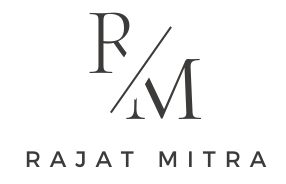A few questions that a journalist asked me over the jeep strapping of a youth in Kashmir
“Would this young man be psychologically traumatized in your opinion? Will he have PTSD?”
“It is difficult to say as I have not met him and I don’t think a diagnosis is so easy either. Some people develop PTSD and some don’t. But one needs to rule out the possibility that journalists, activists going to him and by asking him leading questions, may make him build up answers to show himself as traumatized and start enacting a victim. Unfortunately this is common. Hardened stone pelters, those who lead mobs and face an army are not by and large the ones to develop PTSD in my opinion.”
“What impact it would have on the crowd who witnessed it?”
“He was part of the crowd and raising slogans. One needs to ask the crowd that waited with stones in hands and was planning an attack to lynch. It is not the first time crowds assembled in Kashmir. They are of a violent nature and such crowds are known to lynch anyone who comes in their path. A violent crowd as such would rarely get traumatized but would be very scared. Yes, maybe that’s why they didn’t hit back. It is important the army didn’t pick up a teenager or a child. They chose a violent person from the mob.”
“How would you describe the army major’s action psychologically?”
“There are no easy answers but perceptions for police and army officers get fragmented when surrounded by a violent mob. What we forget is that in this situation it was the mob that was the persecutor and not the army or the election officers.”
“You have dealt with murderous mobs. What would you say of the behavior of the crowd? How does one deal with violent crowds?”
“I have several times and let’s say only one thing works, when they are forced to think as individuals. In that moment when he was tied up everyone in that crowd started thinking of himself as an individual first and not as part of mob seeing him tied like this. So I won’t say they would be exactly traumatized. Let us analyze the previous behavior of the mobs in Kashmir. They are not peace loving protesters holding placards but violent and lynching. The fact that the mob changed after this man was tied is significant. They didn’t throw a single stone. Would they have shown this restraint if he wasn’t one of them? I doubt it.”
“Some people have said it will alienate Kashmiri’s from India even further.”
“It will scare them further because they have not seen the army using this methodology before. It may not alienate them but you might see them identifying if Indian army and people begin to assert themselves and show an inner power.”
“Last question. Many people are saying army be given a free hand. How do you explain this phenomena as a psychologist?”
“I have a problem with the word ‘free hand’. Free hand to me means going berserk, leading to escalation and losing control. To ask a police force and army to show restraint first and then go and have a free hand means they bring out all the pent up aggression and let lose their emotions that are then difficult to control. A mature society cannot allow that. Let there be a well defined method by which our army or police answer violence and aggression the very first time they encounter it and not hold back repeatedly. I have seen it happen often due to lack of political will that characterizes Indian politicians and can be demoralizing.”
The journalist had called back to say the article is not being published so I decided to go ahead and put it on social media. The readers can draw their own conclusions.

